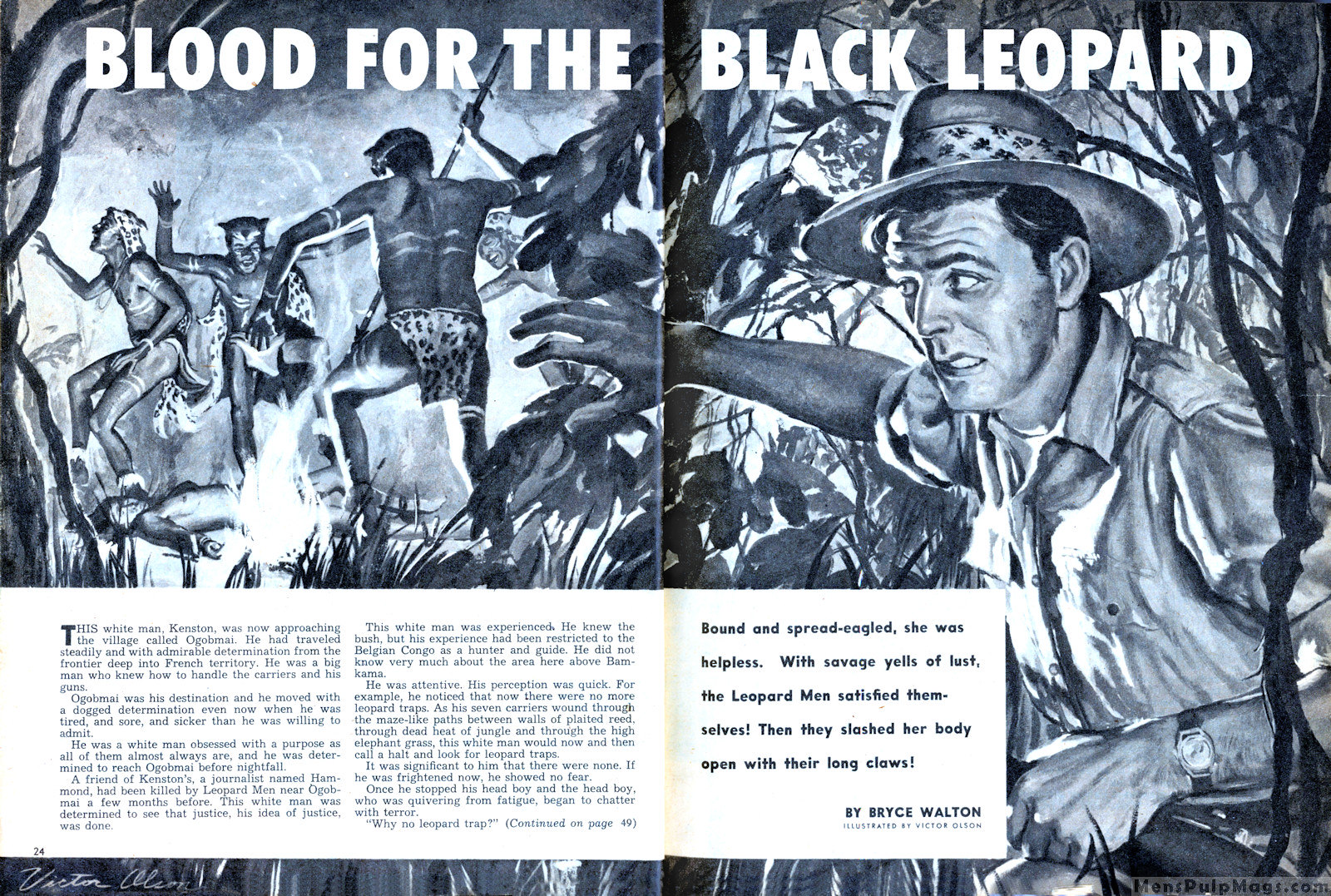 |
| Cropped photo from Eagle 26 November 1960 |
Recently I watched the film Sanders Of The River starring Richard Todd. "While investigating the murder of a fellow police officer in Africa, ex-pat Inspector Harry Sanders (Todd) discovers links to a diamond smuggling operation working out of an area up-river. All clues lead him to a hospital run by Dr Schneider (Rilla) and his assistant director, Dr Weiss (Lieven). At first, Todd suspects that local tradesman Bongola (Sabela) is behind the crimes. But when Bongola is murdered, it becomes clear that Sanders has been on a wild goose chase, and that the real culprit is one of the hospital employees. Can the Inspector work out whodunnit before the river resonates once more to the funereal beat of the death drums?" [Film4.com's review].
 |
| Eagle 18 February 1961 p.10 |
 |
| Eagle 29 October 1960 p.12 |
Once Frank Bellamy's year on "Dan Dare" was finished (he only committed to that) he wanted to move on and the offer of an African strip must have appeared as a breath of fresh air, as Norman Wright said in his foreword to the reprinted strips. The last "Dan Dare" story he illustrated, Project Nimbus ran from 19 March 1960 to 9 July 1960. There was a four week gap until his next series was published in the Eagle comic. The reason, I think, is, besides ensuring the sepia look of the Serengeti worked for Bemrose the printer, that he went to town illustrating George Beardmore's "Fraser of Africa" - the first story was Lost Safari (which ran from 6 August 1960 to 28 January 1961). In his introduction to Hawk Books reprint of "Fraser", Norman Wright says:
"Many enthusiasts knowing of Frank Bellamy's interest in all things African, had assumed that it was himself who suggested the idea of "Fraser of Africa". That was not the case. Frank was approached by a member of the "Eagle" staff and asked if he would be interested in working on the strip. At one time it was suggested that, in view of his knowledge of the subject, he might like to script the serial and produce the artwork. But after discussing the project with Clifford Makins, the comic's assistant editor, he decided that the combined tasks would probably prove to be too onerous for him."It's interesting to note that the series was going to be called "Safari", as there exists a page of art done in yellow and sepia (but not certain to be Bellamy) with that title. Paul Holder has shown me a folder with descriptions of the strip that Bellamy created with the same title. At what point it became "Fraser of Africa" (and why 'Africa' not 'Kenya' for example?) we don't know.
 |
| "Fraser of Africa" - art by Frank Bellamy |
On approximately 6 October 1960 Bellamy had a visitor from Bert Hardy Ltd. Terry Hardy was there to take a photo to accompany a small interview that was to be featured in Eagle 26 November 1960. (see my earlier piece). The photo selected (there must have been others - see Paul Holder's biography in True Brit) shows Bellamy with a drawing board on his lap studying a leopard head. (There is no leopard head illustrated in the first story so this is artistic license but who's complaining!).
 |
| Rugged Men, April 1956. Art by Victor Olson |
Another reason I wanted to write something about "Fraser" was this picture surfacing on MensPulpMags site by Victor Olson. It not only sat nicely on a page about "Fraser" but also nudged me in the direction of Bellamy's famous dance in Everybody's Weekly
 |
| Everybody's Weekly 1 October 1955 - Frank Bellamy |
Bellamy received a letter (dated 26 September 1955) from Sir William Russell Flint, the famous watercolorist, referring to Bellamy's drawing in Everybody's 1 October 1955. He informed Bellamy that he himself had drawn an African scene for King Solomon's Mines by H.Rider Haggard many years before but "your dance was quite unlike anything I had ever seen".
Unfortunately, like many stories re-told many times, this is often referred to as being Frank's drawing of 'King Solomon's Mines', but it is in fact of 'Gorillas were my neighbours'. Perhaps his unpublished work on King Solomon's Mines confused the issue!
Now it just happens that I got a copy of Jim Vadeboncoeur's images where Jim showed some illustrations from an early copy of this story done by Sir WRF!. This is what Jim said when asked: "Here's the only image in King Solomon's Mines that might fit WRF's reference" -Thanks Jim
Lastly we must say something about George Beardmore, the author of the "Fraser" series of three stories. A scant biography appears on the UKComics wiki but the wonderful David Slinn came to my rescue with a list of his strips for Hulton Press
George Beardmore
Girl
‘Captain Starling’ [Pat Nevin]
November 1951-52
‘Belle of the Ballet’
[John Worsley] November 1952 to May 1954 [Chris Garvey/Stanley Houghton/Harry
Lindfield/Gerry Haylock] through to 1964... and then Princess.
‘Robbie of Red Hall’ [Roy Newby] March 1952-56;
‘The Pilgrim Sisters’
[Jack Hardee] August 1956 and
‘London’s Burning’
[Jack Hardee] December 1956-57;
‘Kay of The Courier’ [Bob Bunkin] May 1957
to April 1958.
Eagle
‘Jack o’ Lantern’ [Robert Ayton/C
L Doughty] January 1955 to July 1960;
As
David Slinn, the provider of such accuracy
had to spell out for me, Beardmore “was
initially writing three
scripts with ‘Robbie’ and ‘Belle’, together with ‘Jack’, through to the end of
‘Kay’ in April 1958. Whether he carried on with ‘Belle and Mamie’ when Girl was absorbed into Princess, I’m not sure, but Harry Lindfield continued to draw
the strip for some months.”

No comments:
Post a Comment